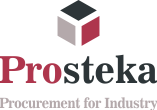Special steel
The special steel business division is one of our mainstays with its tool steel products forming the basis for all other world-wide services. The expertise we have gained across the company’s history, as well as our ability to adapt to new situations form the basis upon, which our success has firmly rested to this very day.
Special steel for extruder screws
In the plastics industry, extruders are considered to be vital for the production of thermoplastic materials. During the extrusion process, granules made of plastics or other hardenable materials are homogenised in an extruder, also referred to as screw extruder, and extruded through a shaping nozzle. The core element of an extruder is the screw, which must resist high loads due to abrasion, adhesion and corrosion. The wear resistance capacities of a screw are determined and affected by the alloy constituents, structure conditions, heat hardening and antifriction properties of the steel used. For specific materials, special wear protection or hard-facing layers are additionally required.
Pressure controlled argon flushing
With the use of pressure controlled Argon, Dörrenberg Edelstahl implements an efficient process for preventing unwanted reactions during steel melting. An inert Argon flush gas is used during the mixing of molten steel to aid the homogenisation of temperature and composition.
Argon gas is used for DETEM vacuum treatment, among others, which is a specially developed process for vacuum degassing small batches. Argon ensures optimal degassing of the molten steel by constant flushing. For materials with strict purity requirements, a special flushing process referred to as purity degree flushing is used. The result is that non-metallic inclusions are carried to the slag by the Argon. The parts are transported to the slag by argon, which is introduced into the molten steel through a flush block in the bottom of the furnace ladle.
The flushing duration is one of the decisive factors, bearing in mind that a longer duration is not always better. Another factor, referred to as flush-up behaviour, is of equal importance. The surface of the flush block, through which argon is introduced into the molten metal, is only slowly freed from the metal at the beginning of the flushing process. The problem is : the dosage of the required argon quantity. If argon is introduced manually, the flushing effect can only be seen at the surface of the slag; however, in many cases the effect then shows up abruptly and excessively. If this happens, a large amount of slag is drawn to the bottom, which in turn results in the accumulation of unwanted particles instead of the intended separation.
We solve this problem by using pressure-controlled argon flushing, which represents the most efficient technology that is currently on the market. It prevents the introduction of slag particles. For this process, the optimum flow quantity of the gas is determined in noncritical tests, adjusted appropriately, and kept at a constant level using a Siematic control unit. In this way, the control unit increases the pressure instead of the quantity of the gas. The decisive advantage of the system is that it provides information about duration and quantities during the entire vacuum treatment.
Tool steel
The properties of a steel depend on optimum metallurgic processing in the furnace, the degree of purity and the chemical composition. Production of our steels is performed in our own steel plant in close collaboration with qualified and competent German and international partners. In addition to manufacturing and development, warehousing is an important feature of our service range. We offer the following tool steels:
- Cold-work tool steel; (click for technical data)
- Hot-work tool steel; (click for technical data)
- High-speed steel; (click for technical data)
- Special materials; (click for technical data)
- Powder metallurgical steels. (click for technical data)
Engineering and stainless steels
- Carbon and alloy engineering steels; (click for technical data)
- Quenched and tempered steels; (click for technical data)
- Alloyed and unalloyed engineering steels;
- Corrosion, acid, and heat-resistant steels;
- Glass mould steels.
Additional products and services
- Special materials;
- Precision flat steel;
- Silver steel;
- Machining.
